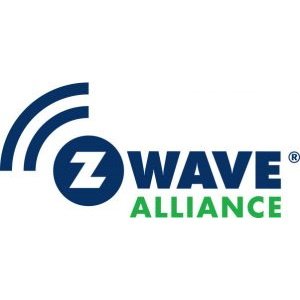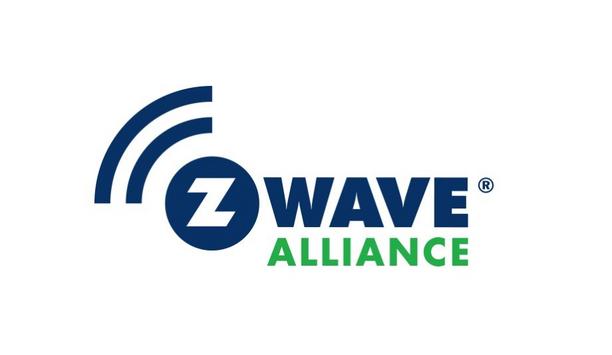Z-Wave Alliance - Experts & Thought Leaders
Latest Z-Wave Alliance news & announcements
The Z-Wave Alliance, the standards development organisation dedicated to advancing the smart home and Z-Wave® technology, is excited to announce the launch of the 2024B Z-Wave Specification package as well as the introduction of a new Accelerator Membership Level aimed at empowering startups and young companies in the IoT ecosystem. These initiatives demonstrate the Alliance’s ongoing commitment to innovation, collaboration, and ensuring interoperability in the IoT market. Z-Wave 2024B Advancing Certification Standards The 2024B Z-Wave Specification Package includes documents that have undergone an Intellectual Property Rights (IPR) review and include updates that significantly enhance the Z-Wave Certification programme, introduce new and updated Z-Wave Command Classes, and unlock exciting new tools for developers. These updates to the overall Z-Wave Specification have been implemented to ensure improved functionality, and regulatory compliance, and provide a seamless path forward for developers and manufacturers. Key highlights include Command Class Updates: the updated Z-Wave specification introduces several significant advancements to Command Classes, further enhancing device interoperability, customisation, and security. Notable 2024B updates include the User Credential Command class which is used to manage various user credentials for gaining access to properties, typically through unlocking or opening doors. Updated Certification Requirements: The robust Z-Wave certification process has been further elevated through the adoption of the latest Compliance Test Tool (CTT) version 3.9.1. The latest version further ensures rigorous validation of device performance and includes SmartStart, S2, and Z-Wave Long Range (ZWLR) support. New Certification Tool Features: The 2024B-2 Certification programme and Tools update was released on January 15, 2025. Key additions include enhanced range testing benchmarks, streamlined cross-portal cloning for seamless recertifications, updated emulator support for ZWLR, SmartStart, and User Credential Command Classes (UCCC), along with IP-based devices. The upcoming Z-Wave 2024B-3 update addresses a frequency change proposal for ZWLR in the EU. Due to ETSI regulatory requirements, the frequencies for ZWLR-EU will transition from 864.4 MHz and 866.4 MHz to 864 MHz and 866 MHz. This change ensures compliance with regulatory standards and includes updated PHY specifications, and updated product and protocol certification for vendor software. Members can expect to see the final update made to 2024B and the opening of ZWLR EU certification by April of 2025. Addressing regulatory challenges “The Z-Wave 2024B update represents our continued efforts to enhance the Z-Wave ecosystem,” said Avi Rosenthal, Chair of the Board for the Z-Wave Alliance. “By addressing critical regulatory challenges and introducing new tools for developers, we’re enabling the IoT industry to create innovative, future-ready solutions while simultaneously maintaining the high standards of interoperability and security that Z-Wave is known for.” New Accelerator Membership Level Supporting Startups and Young Companies This new membership tier is specifically designed to empower startups and emerging IoT companies In addition to the updates found within the 2024B Specification package, the Alliance is proud to announce the launch of its Accelerator Membership Level. This new membership tier is specifically designed to empower startups and emerging IoT companies, providing them with affordable access to the resources, support, and collaborative environment of the Z-Wave Alliance. Tiered fee structure The Accelerator Membership Level offers a tiered fee structure and access to all Z-Wave Alliance materials and working groups, ensuring new members have the tools and knowledge to succeed. Companies can join in Year 1 for a discounted fee of $2,500, with gradual increases in subsequent years as they progress through product development, certification, and market launch. Standard manufacturer membership level By Year 5, Accelerator Members transition to the standard manufacturer membership level, fully integrated into the Z-Wave ecosystem. The Accelerator Membership programme has been structured to encourage engagement and participation. As part of their commitment, members under this programme are asked to participate in the working groups of the Alliance to qualify for discounted membership. Advancements and inclusivity “The Accelerator Membership Level is a testament to the Z-Wave Alliance’s dedication to fostering advancements and inclusivity,” said Rosenthal. “Startups and young companies are key innovators in the IoT industry, and the Alliance is proud to have witnessed many of our member companies grow or be acquired into much larger brands over the years. This programme provides a viable foundation for young companies to ensure they have the resources and support required to bring their ideas to life while contributing to the growth of the Z-Wave community.”
The Z-Wave Alliance, the standards development organisation dedicated to advancing smart home and Z-Wave® technology released the list of the latest Certified Z-Wave and Z-Wave Long Range (ZWLR) smart home devices that centralise the control and interface of connected smart devices across a property. With nearly 100 ZWLR-certified devices in the market and over 4,500 devices in the Z-Wave ecosystem, this roundup includes new devices categorised as hubs, controllers, and gateways. Z-Wave Certified mark "Z-Wave remains the gold standard in residential smart home and security systems while ZWLR redefines what edge-of-property means. As we’ve continued to drive breakthroughs in the Alliance’s Open Source working group this year, certification advanced alongside the technology,” shared Bettina Roll, Z-Wave Alliance Certified Program Manager. “The Z-Wave Certified mark means Z-Wave devices are interoperable with forward and backward compatibility and Z-Wave and ZWLR co-exist on the same network. It’s how we’ve maintained the ecosystem since day one – no Z-Wave device left behind.” 2GIG Edge Security Panel Featuring AI-powered facial recognition, it ensures secure and personalised access while maintaining privacy The Z-Wave Certified 2GIG Edge Security Panel is a state-of-the-art home security and automation hub designed to provide unparalleled control, convenience, and protection. Featuring AI-powered facial recognition, it ensures secure and personalised access while maintaining privacy with local data processing. Its sleek, edge-to-edge touchscreen offers a beautiful aesthetic and intuitive navigation for managing smart home devices such as thermostats, lighting, and smart locks. Uninterrupted monitoring The system delivers robust security and uninterrupted monitoring through advanced encryption, real-time alerts, and dual-path communication via Wi-Fi and LTE. Two-way voice communication allows direct interaction with the monitoring station during emergencies, and customisable user profiles offer tailored permissions for families, guests, or service providers. Designed for both DIY and professional installation, the 2GIG Edge integrates easily with Z-Wave and ZWLR Certified devices, Amazon Alexa, Google Assistant, and more. ADT Base The ADT Base (S501R0-01) is a sophisticated and versatile hub that serves as the foundation of a home security and smart home automation system. Engineered with Z-Wave and ZWLR, the ADT base seamlessly connects and manages a wide array of smart devices, including locks, lights, thermostats, and sensors, to create an integrated and intuitive home ecosystem. With robust encryption and secure communication protocols, the ADT Base ensures reliable and tamper-resistant operation, providing peace of mind and enhanced protection for the home. Compact and modern design Fully compatible with the ADT+ system, the ADT Base allows for centralised control and remote access Its compact and modern design blends effortlessly into any living space, while its user-friendly setup makes it accessible for both new users and experienced smart home enthusiasts. Fully compatible with the ADT+ system, the ADT Base allows for centralised control and remote access via the ADT+ app, enabling users to monitor and manage the home from virtually anywhere. Climax HSGW Gen2 Security Panel The Climax HSGW Gen2 Security Panel is an advanced home protection solution certified on the Z-Wave 700 series to boost wireless communication capabilities and improve range, security, and energy efficiency for integrated smart home devices. The Z-Wave Certified Climax HSGW Gen2 creates a cohesive and interconnected system for enhanced safety and convenience. Its sleek, modern design ensures it blends seamlessly into any environment, while its intuitive interface simplifies operation for users of all experience levels. Advanced encryption The panel offers reliable real-time monitoring, customisable alerts, and advanced encryption to safeguard against unauthorised access. The Climax HSGW Gen2 is compatible with remote management through a dedicated app, allowing for efficient control of security and automation features from virtually anywhere. Control4 CORE 3 and CORE 5 home controllers With Z-Wave, these controllers enable reliable and secure wireless communication with compatible devices The Control4 CORE 3 and CORE 5 home controllers with Z-Wave technology deliver powerful and flexible solutions for managing home automation and entertainment systems. Certified on the Z-Wave 700 series featuring external reverse SMA connectors for their Z-Wave antennas, this series of Control4 controllers is designed to support a wide range of devices including lighting, climate control, security, entertainment equipment, and so much more. With the addition of Z-Wave, these controllers enable reliable and secure wireless communication with compatible devices, expanding the ecosystem of supported products including the most popular Z-Wave lighting switches and smart plugs. Storage capacity The CORE 3 is ideal for medium-sized systems, while the CORE 5 offers enhanced processing power and expanded capabilities for larger, more complex setups. Both models are equipped with advanced processing and storage capacity for smooth operation and quick response times. Sleek and modern in design, the Control4 CORE 3 and CORE 5 fit effortlessly into any environment, providing intuitive control through touchscreens, mobile apps, and voice assistants. RISCO RisControlZW100 Touchscreen Keypad The RISCO RisControlZW100 Touchscreen Keypad combines standard keypad functionality with RISCO’s Smart Home cloud-based solution in an 8-inch high-resolution touchscreen. RisControl provides intuitive control over alarm systems, smart home devices, and live video feeds, enhancing both convenience and security for homeowners. Z-Wave Certified on the Z-Wave 700 series, the controller supports a wide range of smart home devices to enable users to create customised automation scenes and schedules that align with their daily routines. SmartRent Alloy SmartHome Hub+ The Hub+ has a unique design that reduces the amount of hardware required, simplifying installation The SmartRent Alloy SmartHome Hub+ is an innovative device that combines a smart thermostat with a smart hub running on Z-Wave technology to streamline home control into a single device. The Hub+ has a unique design that reduces the amount of hardware required, simplifying installation and maintenance processes. Pending ZWLR certification, the Hub+ ensures reliable and secure communication with a wide array of compatible smart devices, including smart locks, lighting, and leak sensors. User-friendly interface The Hub+ features a user-friendly interface that allows residents to manage multiple devices simultaneously creating scenes like home or away. Additionally, the system can send alerts and automatically notify maintenance personnel upon detecting issues like leaks, enhancing both convenience and security. The Alloy SmartHome Hub+ is compatible with most HVAC systems, making it a versatile solution for modernising rental properties and providing residents with a sophisticated, integrated smart home experience. SmartRent Alloy Fusion Hub The SmartRent Alloy Fusion Hub is an advanced wall-mounted Z-Wave and ZWLR (pending certification) hub with an integrated thermostat designed specifically to streamline the management of smart home devices across large multi-dwelling Unit (MDU) rental properties. With ZWLR Alloy Fusion communicating far beyond the walls of the primary residential unit in an MDU property, whether that is a distant storage unit in the parking garage below or the water heater in the adjacent utility room, the hub’s range ensures connectivity, so alerts aren’t missed, and commands are received. Smart living experience The customisable interface includes features such as light and dark modes and local weather displays The intuitive touchscreen interface allows residents and guests to also control climate settings, lighting, outlets, and sensors directly from the device or via the SmartRent App. The customisable interface includes features such as light and dark modes and local weather displays, with the capability to incorporate additional functionalities over time. By consolidating multiple device controls into a single, sleek unit, the Alloy Fusion Hub simplifies property management, reduces the need for multiple installations, and enhances the overall smart living experience for residents. TELUS Boost IoT 2.5 The TELUS Boost IoT 2.5 is an advanced networking device that combines tri-band Wi-Fi 6 technology with integrated Z-Wave and ZWLR with Bluetooth Low Energy (BLE) capabilities. Delivering comprehensive whole-home connectivity and automation, the controller has a sleek, cylindrical design that features a removable base for easy access to key functions while allowing it to blend seamlessly into any home environment. By supporting Wi-Fi, Z-Wave, ZWLR, and BLE protocols, the Boost IoT 2.5 enables users to control a wide array of compatible smart home devices through a unified app interface, enhancing both convenience and security and providing reliable connectivity even in environments with numerous connected devices. Universal Devices ZMatter USB Stick The Universal Devices ZMatter USB Stick is a versatile module that integrates Z-Wave, ZWLR, Zigbee, and Matter protocols, enhancing home automation systems with expanded device compatibility and future-proofing capabilities. The ZWLR Certified ZMatter USB Stick offers extended reach and robust connectivity for a wide array of smart devices. Seamless migration The module supports Z-Wave SmartStart for effortless device inclusion and S2 Security The module supports Z-Wave SmartStart for effortless device inclusion and S2 Security for secure communications. The ZMatter design facilitates seamless migration from existing setups ensuring a smooth transition without extensive reconfiguration. By unifying multiple smart home standards, the ZMatter USB simplifies the management of diverse devices, providing a cohesive smart home experience. Certified Z-Wave ecosystem With an ever-growing list of more than 4500 devices in the certified Z-Wave ecosystem, including the more than 90 ZWLR end devices as recently announced by member companies such as Shelly, Alfred, Zooz, Alarm.com, Jasco, and more, Z-Wave is empowering manufacturers and consumers alike to build smarter, more connected environments.
Shelly Group, a global pioneer of IoT and smart building solutions, announces the expanded Shelly Wave lineup for the U.S. market, enhanced with Z-Wave® Long Range (ZWLR) technology. This development represents a significant advancement in smart home connectivity, delivering extended transmission range, robust network scalability, and improved energy efficiency. Benefits by ZWLR technology The expanded lineup features eleven Shelly Wave solutions super-charged with support for ZWLR The Shelly Wave product portfolio, built on the Z-Wave 800 Series, includes new products that have been purpose-built to support ZWLR functionality as well as existing UL-certified Z-Wave devices that have been upgraded to take full advantage of the benefits offered by ZWLR technology. The expanded lineup features eleven Shelly Wave solutions super-charged with support for ZWLR and includes three battery-powered devices, demonstrating a dedicated focus on delivering versatile, power-efficient solutions. Key benefits of ZWLR to Shelly wave devices Extended range and coverage: ZWLR provides a substantial range boost, enabling devices to communicate over distances exceeding 1 mile (line of sight) at full power. Scalable Networks: ZWLR supports up to 4,000 devices on a single network, representing a 20x increase in Z-Wave node support compared to Z-Wave mesh with the added benefit of co-existing on the same network as Z-Wave mesh. Security and Compatibility: Advanced encryption and backward compatibility with existing Z-Wave devices and networks ensure seamless integration and secure operations. New Shelly Wave products Shelly Wave product line caters to a range of applications and device deployment designs The upgraded Shelly Wave product line caters to a range of applications and device deployment configurations, from basic point-to-point home automation to complex and robust device installations. Enhanced with ZWLR, the new Shelly Wave products are ideal for environments where long-range connectivity and energy efficiency are essential, such as large homes, multi-unit properties, commercial settings, and edge-of-property installations. Smart home connectivity barriers “With new devices featuring support for ZWLR, Shelly is helping break down smart home connectivity barriers, empowering homeowners, security installers, and commercial property owners and managers with unmatched range, scalability, and energy efficiency to redefine their automation experience,” said Leon Kralj, CTO of Shelly Group. “As the only technology we trust to seamlessly support powered devices and battery-operated solutions, as well as outdoor applications and multi-floor buildings, ZWLR delivers unprecedented range and interference-free performance on Sub-GHz frequencies, ensuring unparalleled reliability and versatility.” Adoption of Z-Wave advancements “The integration of ZWLR technology into the Shelly Wave product lineup is a testament to the transformative power of Z-Wave innovation,” said Avi Rosenthal, Chairman of the Board for the Z-Wave Alliance. “As a standards development organisation, we rely on future-focused manufacturers, such as Shelly, to drive the adoption of Z-Wave advancements and are thrilled to see a comprehensive product line that delivers all of the benefits of ZWLR to customers worldwide, redefining what is possible in smart home and IoT connectivity.” Lineup of US Shelly Wave devices The expanded lineup of US Shelly Wave devices enhanced with ZWLR includes: Shelly Wave Plug US Shelly Wave Door/Window Shelly Wave H&T Shelly Wave Motion Shelly Wave Dimmer Shelly Wave Pro Dimmer 1 PM Shelly Wave Pro Dimmer 2 PM Shelly Wave 1 Shelly Wave 1 PM Shelly Wave 2 PM Shelly Wave Shutter Shelly Wave ZWLR devices are slated to be available in the U.S. in H1 2025.
Insights & Opinions from thought leaders at Z-Wave Alliance
Industry experts predict that sensors in the home will reach a level of sophistication never considered in early versions of Smart Home. These devices will know when the house is empty and be able to shut off heating and cooling systems. Smart phone with geolocation will then tell it when the owner is on their way back so it can start adjusting the temperature to a comfortable level. And, it won’t just be lights that turn on and off. Sensors in washing machines will know that clothes have been put inside and will start the cycle at a time when costs are at a lower level. The Smart Home market is also driving innovation in the form of Bluetooth low energy (BLE)-enabled locks for external doors on homes and adding mobile credential use to their offering. This in turn is driving volume in the wireless lock sector and having a positive impact on volumes and pricing in the commercial locking market. Data capture form to appear here! Wireless home automation As the home automation industry has expanded with an ever-growing number of devices and services, companies are placing bets on which wireless protocols will dominate. The past few years the leaders have been Z-Wave and ZigBee. Companies are also using a variety of other standards including Crestron’s Infinet, Insteon, and proprietary technologies such as Lutron’s ClearConnect. The home automation industry has expanded with an ever-growing number of devices and services The popular ZigBee and Z-Wave short-range wireless technologies have proven ideal for the kinds of home-area networks that are becoming prevalent. Based on the IEEE’s 802.15.4 personal-area network radio standard, ZigBee is an open wireless standard. Z-Wave was developed by Zensys (later acquired by Sigma Designs) as a proprietary wireless standard. Z-Wave’s wireless mesh networking technology allows nodes to communicate with each other directly or indirectly through available relays if they’re within range. Out of range nodes can link with each other to access and exchange information. A Z-Wave network can have up to 232 nodes. Some companies have sought to hedge their bets out of a desire to be more “manufacturer agnostic.” Bluetooth and Wi-Fi are gaining popularity with new low-power variations of these standards. Smart doors and their benefits Despite a wealth of features offered by the latest smart door locks — remote and location-based locking/unlocking; voice activation; timed access; emailed entry alerts; and integration with smart camera and lighting systems — most people still have limited knowledge of their capabilities. Only 14% of survey respondents described themselves as “very familiar” with what a smart lock can do. Even though most of them probably use smart access control solutions at their workplace. While smart video surveillance solutions that can impact home automation are still in nascent stages, the potential is immense. Modern video analytics and surveillance technology have the capability to offer convenience to the connected homeowner and lower energy consumption. By determining the optimum lighting, heating and cooling needs of a connected home, smart video surveillance technology can drive down energy-related costs significantly. Smart cameras will also have an impact on the need for DVR/NVR products in an automated home, as analytics-driven video surveillance solutions that generate large amounts of data will reduce the need for these devices. Another emerging element in home security is the use of drones The resolution of an advanced radar sensor Smart video surveillance technology can drive down energy-related costs significantly Today, the resolution of an advanced radar sensor is high enough to enable not only presence detection, but also to provide advanced features for security, automation and well-being, all in one. Imagine for example, that the security sensor installed in an elderly parent’s home could also detect a fall having occurred, monitor the breathing of a baby or even leaks in the wall. Due to the unique field of view that radar provides as well as the multi-functional potential, this technology will be the key to the awaited convergence of smart home functionalities and minimisation of home devices. A radar sensor’s accuracy and its ability to support wide functionality and applications are determined initially by its resolution, which is based on two key factors: bandwidth and number of channels. The wider the bandwidth and the more channels the radar supports, the more accurate the data received. Imagine the difference between a 1990s television model and a 4K 2018 television model: as the resolution is ever improving, the sharper and more detailed is the image. Drones as a security mechanism Another emerging element in home security is the use of drones. An Amazon patent outlines how its unmanned aerial vehicles (UAVs) could perform a surveillance action at a property of an authorized party. It would be “hired” to look out for open garage doors, broken windows, graffiti, or even a fire. The drone would only view authorized locations and provide information back to the homeowner. The idea is to deploy Amazon’s previously proposed (but not yet realized) “delivery drone” to provide surveillance of customers’ homes between making deliveries. In a “surveillance as a service” scenario, Amazon’s customers would pay for visits on an hourly, daily or weekly basis. Drones would be equipped with night vision and microphones to expand their sensing capabilities. Catch up on part one and part two of our smart home mini series.
There’s no question that the popularity of Do-It-Yourself (DIY) security and home automation products is on the rise. The reasons for the growth in DIY sales are numerous, including increased awareness of home automation products, fast set-up, limited (if any) installation costs, and interoperability with other smart security products. In fact, with the parallel rise of smart home hubs like Alexa and Google Home, many people are opting to attempt the set-up of smart home devices without any professional assistance. According to a 2018 Residential Security Market Report prepared by Parks Associates and Security Sales & Integration magazine, “More than 60% of installing dealers now report that DIY systems are biting into demand for their services.” But the rise in DIY is not entirely bad news for security and home automation installers and dealers. There are a number of ways to view this glass as half-full. Let’s look at a few of them. Increase in revenue for dealers With their lower cost and perceived ease of installation, DIY products have broken down barriers for additional purchaseThere are reasons for dealers and installers to be cheerful about the rise of DIY. For one thing, according to that same Residential Security Market Report from Parks Associates, residential security dealers are doing quite well. The report states, “In 2017, revenues were up an average 7.72% for security dealers.” What about installations? The report goes on to say, “For 2017, the average number of installs per dealer was 22 per month, compared to 17 per month in 2016.” So, revenues are up for security dealers, and at least part of the reason can be attributed to the fact that DIY products can raise overall awareness of and spur interest in other home automation and security products. With their lower cost and perceived ease of installation, DIY products have actually broken down barriers for the additional purchase, and installation, of complete, professionally installed systems. Wireless, connected smart locks For example, the sale of wireless, connected smart locks (viewed by some consumers as DIY) can lead to opportunities for further home automation product sales and professional installations. Connected smart locks can actually act as an extension of a smart hub or controller. They can be used to wirelessly communicate with and control all the devices that make up a home automation system, including lighting, entertainment, thermostats, air, alarms, shades and more. With their lower cost and perceived ease of installation, DIY products have actually broken down barriers for new security installations And they can do all this from a prime, convenient location – the front door, as well as other points of entry like the side or back doors. Plus, smart lock conversion kits like Kwikset Convert let homeowners easily bring home automation capabilities to their door without altering the aesthetics of the entry. Connected smart locks can allow homeowners to set up their home with custom scenarios, right before they step inside. For example, residents can program their lock so that every time they unlock the door, a foyer light goes on, temperatures begin to rise to a set level – even connected coffee makers can begin to make a cup. Portfolio of home automation products One of the best ways to mitigate the ‘threat’ of DIY sales is for dealers and installers to become more versatileSmart locks are just one example of the potential of DIY products to spark a homeowner’s interest in a wide range of other home automation devices, many of which would benefit from professional installation. One of the best ways to mitigate the ‘threat’ of DIY sales is for dealers and installers to become more versatile and offer a complete portfolio of home automation products. The larger the home automation offering, the more devices there are to sell and install, the larger the installation required, the greater the need for professional installation. Many homeowners who feel like they have a certain level of handiness will start by trying to do it themselves with a DIY product. But things don’t always go as planned, especially if they are attempting to set up a robust home automation system. First off, just because a product is DIY doesn’t mean that the old products that are being replaced are going to easily make way for the new. A DIY thermostat or smart lock might require that the old equipment (and possibly wires) get tugged out of the wall. Messy holes might need to be filled. Advantages of professional installation Even after the old system has been removed, homeowners planning on setting up a connected system may soon realise they don’t have the electrical skills or technological know-how to install and connect all devices, get a system programmed correctly, and get everything up and running smoothly. Professional installers have learned from experience; there’s very little that they haven’t seen before. With their years of experience, installers know the best way to automate a home and how to create a custom smart home experience Do-it-yourselfers might be able to solve problems by searching the internet and finding videos. But, then again, they might not. After going the DIY route once, many full-home automation system enthusiasts are beginning to realise that the best way to get things done right the first time is to leave the installation and set-up to a professional. Professional installers can and should bring an extra level of experience and guidance to the process. Their services should go beyond tech installation and also include interface design. With their years of experience, installers know the best way to automate a home – how to create a custom smart home experience that doesn’t make the user feel less than smart. Selling additional home automation products If a problem arises due to installation error, the DIYer does not have any recourse to correct these mistakesResidential security dealers who offer professional installation should be willing to embrace the DIYer who has attempted to do a self-install but has not been able to complete the process successfully. With an open mind to this scenario, they can save the day for the DIYer, as well as create an opportunity to sell additional home automation equipment that the DIYer may not have known to be available. The disparity between DIY and professional installation also brings to light the fact that there are no ‘satisfaction guarantees’ and no ‘installation/labour warranty’ available when a home automation system is installed by a DIYer. If a problem arises with either the equipment connectivity due to installation error, or if a piece of equipment is installed incorrectly, the DIYer does not have any recourse to correct these mistakes. This may not be as critical if a DIYer installs a minor piece of equipment, but with something as critical as securing and protecting their home with a home automation and security system, most people want full peace of mind that everything has been installed correctly. Reduces connection instability According to a 2017 study by the analyst firm, IHS Markit, “The quality of the equipment is usually higher in professionally installed systems, and professional configuration and setup greatly reduces the potential for connection instability…” This is an issue that DIYers may come to realise over time. On the other hand, one issue DIYers may recognise right away, especially if they are attempting to connect multiple devices, is that the connectivity may be inconsistent. Professionally installed devices operating on a wireless protocol might deliver better, consistent, longer-range connectivity IHS Markit explains that, “DIY systems rely on open protocols and Wi-Fi connectivity that can sometimes be unreliable, creating connection issues. Some of the sensors can become unrecognisable to the system, requiring intervention from the user. In contrast, professional wireless systems rely on UL- or EN-certified equipment to operate on the basis of proprietary frequency, enabling them to work with the control panel much more seamlessly.” In other words, professionally installed devices operating on a wireless protocol, even an open-source protocol like Z-Wave, might deliver better, consistent, longer-range connectivity, and fewer headaches. Not everyone is a DIY customer There are customers who want someone to install the devices correctly and help them learn how to use and maintain themThere’s no doubt that there’s a segment of the security and home automation market that loves to spend their free time doing their own home improvement. They are watching videos, reading how-to books and manuals, and enjoying every minute. There’s also a segment of the market whose top goal is to save money up front. For these customers, there’s no getting around the joy of saving money with the lower cost of many DIY products. But there are also a great number of prospective customers out there for whom DIY is of absolutely no interest. These consumers do not want to be their own IT department. They want expert help: they want someone to install the devices correctly and help them learn how to use and maintain them. The IHS Markit study points out what many home automation dealers already know: that the elder and aging-in-place markets are an ideal destination for the security and convenience of home automation products. The study says, “Many senior citizens are not tech savvy enough to install a DIY system by themselves, so they tend to rely on professionally installed systems that are usually maintained by a family member.” Along with the senior citizens market, there are many other market segments out there that still desire worry-free professional installation. Installers should offer a range of products that includes some DIY products, and some leave-it-to-a-pro products Producing complete and custom solutions Perhaps the best way for dealers and installers to stave off that feeling of doom that they might have about DIY is to tackle the problem head on and be creative. Offer a range of products that includes some DIY products, and some leave-it-to-a-pro products – consider the DIY product a great entry point for a more comprehensive system. Play up the peace of mind that comes with professional installations and support that pitch with flexible monitoring contracts and service plans. Share what you do and why; relay your passion for producing complete and custom solutions and communicate how you add value to any and every sale. No one, not even the most tech-savvy consumer, wants to install their own products if the end result is that the product doesn’t work the way it should. That’s where the pros can, should and will always come into play.
There’s growing noise around smart homes and smarter security. You’ve probably heard it. But there is a place where access control and more have been smart for decades: the workplace. Home automation and IoT are still playing catch-up with the commercial sector. A new insights report from ASSA ABLOY and IFSEC Global — “The Smart Door Locks Report 2018” — measures just how fast consumer smart technology is running. According to a survey conducted for the report, 61% of households now claim to own at least one smart home device or system. Energy monitors, home CCTV cameras, intruder alarms and smart door locks are the most popular, according to the report. All these functions, of course, have been available to businesses for years.61% of households now claim to own at least one smart home device or system Educating the smart home consumer Paradoxically, report data also questions how much consumers really know about their smarter home. A surprising 42% of those surveyed, for example, were unaware they could control a smart door lock from their phone. In fact, many leading smart door lock models offer this feature, delivered by Wi-Fi or Bluetooth and an app. Despite a wealth of features offered by the latest smart door locks — remote and location-based locking/unlocking; voice activation; timed access; emailed entry alerts; and integration with smart camera and lighting systems — most people still have limited knowledge of their capabilities. Smart technology is increasingly becoming the new norm in terms of home security Only 14% of survey respondents described themselves as “very familiar” with what a smart lock can do. Even though most of them probably use smart access control solutions at their workplace. Secure homes through smart technology Monitoring and security are not the only drivers for smart home adoption. We humans also love convenience, and modern living presents us with problems that smart home technology can solve. Ironically, given the report’s findings, it takes a smartphone to really unlock the convenient possibilities of smarter living. The device that’s “always to hand” is central to the newest generation of smart door locks.A smart door lock is a convenient way for a landlord or agency to offer round-the-clock check-in and check-out If homeowners wish to remotely manage property access for friends and family, many smart door locks oblige. You let in guests remotely, send them a virtual digital key, or provide a temporary or single-use PIN to unlock the door. It is just as easy to revoke a digital key, if you don’t want its owner to come around anymore. This is a significant improvement over sharing physical keys — or hiding one under the doormat. We cannot be totally sure where a metal key ends up and have no way to track or cancel it once it’s “out in the wild”. Commercial access control offers such functionality as standard, of course. In addition, smart door locks offer more than just stand-alone operation and clever functions. In a domestic setting, magic happens when locks work in harmony with a home automation system, connected by protocols like Z-Wave, ZigBee or Wi-Fi. "Smart" security on the move The smartphone is becoming a remote control for managing a connected life beyond just home (and even workplace) security. According to Accenture, the parcel delivery services market will grow by $343 billion by 2020. Just like home security, convenience is a major driver of change. Homeowners can send guests a virtual digital key to their phones, or provide a temporary or single-use PIN to unlock the door A recent PostNord pilot in Sweden aimed to remove the inconvenience of waiting home for a postal delivery. Selected customers of some major Scandinavian e-retailers could choose to have parcels delivered inside their front door, if it was equipped with a Yale smart door lock. Home delivery is among potential smart services covered in “The Smart Door Locks Report 2018 ”. When asked whether the ability to receive parcels securely in a porch or lobby would make them more likely to invest in a smart door lock, 79% said it would.It is easy to revoke a digital key, if you don’t want its owner to come around anymore Holiday rentals and smart home tech ASSA ABLOY research published in 2017 forecasts continued growth in the European holiday rentals sector (at 5.8% CAGR). Smart door locks are also making an impact here, at both ends of the market: for service providers — agents and homeowners — and for travellers. A smart door lock is a convenient way for a landlord or agency to offer round-the-clock check-in and check-out, without creating extra work or staff costs. Both Intersoft, in Croatia, and Hoomvip in Spain have built holiday rentals management systems around an app and the ENTR® smart door lock. Agents issue, revoke, track and manage virtual keys for all their guests, saving everyone time and hassle. Travellers use their phones and an app to unlock their apartment. For these visitors the smartphone is already an essential travel accessory. It is a boarding pass, a credit card, a travel guide, and a postcard home... why not a door key, too? And if this key is backed by a trusted home security brand — and a company with vast experience in the mature market for commercial “smart” security — better still.
Using artificial intelligence (AI) to automate physical security systems
DownloadA modern guide to data loss prevention
Download7 proven solutions for law enforcement key control and asset management
DownloadThe truth behind 9 mobile access myths
DownloadAccess control system planning phase 2
Download


















